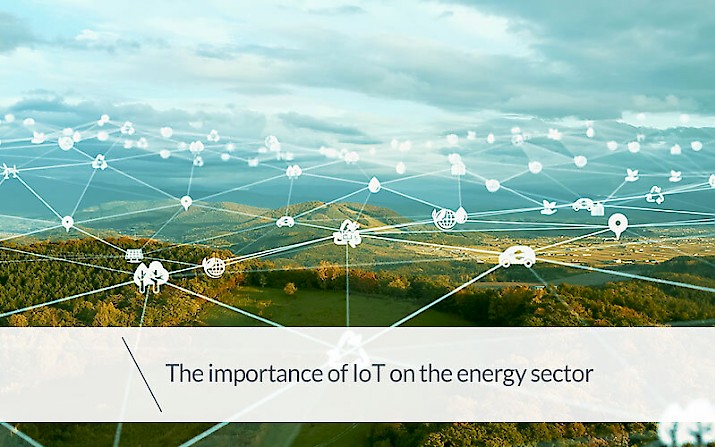
The ecological transition and the needs imposed by climate change issues are directly involving new technologies, not only regarding energy production but also energy management, distribution and supply, and also storage and network efficiency, processes in which the IoT (Internet of Things) is increasingly pivotal.
The IoT can be employed to improve energy efficiency, increase the share of renewable energies used and reduce the environmental impact of energy usage.
The energy sector has always been associated with new technologies, even more so now, as we currently find ourselves in a phase where automation, intelligent energy production and supply management are vital. IoT is now able to support and select both automated decisional processes in real time, and tools which facilitate the optimisation of those decisions.
The role of Iot in the energy industry
Energy transition means not only a reduction in the use of fossil fuels, favouring renewable energies, but also moving away from centralised networks towards distributed networks, where big players are present of course, but together with small local producers (so-called prosumers), for example solar panel installation for residential and commercial premises.
These hubs however, have to be within the network and connected intelligently, and the use of IoT technologies, such as sensors, communications systems and data transfer, plus artificial intelligence algorithms, can assist in monitoring user energy consumption models and various devices across time scales, and is able check up on them in a more efficient manner.
IoT sensors and applications within the energy sector
When talking about IoT applications within the energy sector, sensors are probably the most important element.
These devices can be integrated across every single energy production, distribution, supply and consumption phase, to monitor and acquire essential data in real time and optimise processes.
There are differing types of sensors developed for use across various applications, including the following.
- Temperature sensors: such sensors pick up fluctuations in the heating and cooling down phases of production systems, whilst at a consumer level can maximise performance of domestic heating systems by regulating on/off commands on the basis of the temperature within the ambient.
- Humidity sensors: this parameter is vital in energy consumption and production, in particular for sea-based wind turbines which are highly influenced by the humidity at any single instant.
- Light sensors: illumination represents a high share of all energy consumption and via these devices it’s possible to automatically control lighting levels internally and externally by regulating on/off functionality, thus achieving consistent savings.
- Movement sensors: human detection in an environment results in illumination being activated or deactivated, thus reducing consumption for buildings.
These devices represent just a fraction of the enormous contribution that the Internet of Things can bring to the energy sector, together with artificial intelligence, communication and data transfer systems, cloud computing, data analysis, intelligent cities and smart grids.
Reduction of CO2 emissions and production optimisation
Production process optimisation, over and above consumption, is vital in order to fight climate change.
IoT technologies can contribute to reducing CO2 emissions, thus creating more efficient energy production.
By monitoring real time consumption, it is possible to regulate production and improve distribution at every level within the supply chain.
Even maintenance management can be efficient through the use of connected technologies, thanks to intelligent monitoring which predicts possible breakdowns with sufficient advance notice, thus avoiding costly last-minute interventions.
Conclusions
IoT applications in the energy sector are several and, in the future, we will see further use of new technologies, such as blockchains.
The goal is clear: optimise production, distribution and consumption in order to tackle increasing global energy demands, whilst at the same time, reaching net zero carbon emissions by 2050.



